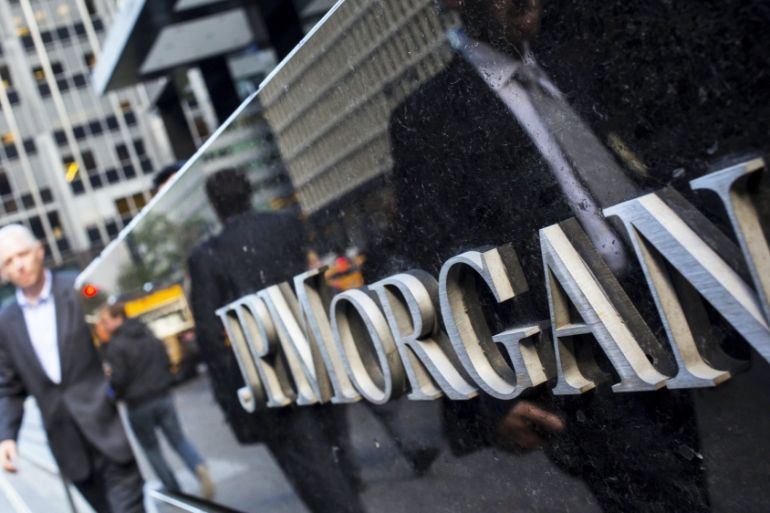JPMorgan Chase profits jump 52% amid banking turmoil
Deposits shot up as businesses and customers flocked to the banking giant after the failure of two smaller banks.

JPMorgan Chase & Co posted a 52 percent jump in its first-quarter profits, helped by higher interest rates, which allowed the bank to charge customers more for loans. The bank saw deposits grow noticeably, as business and customers flocked to the banking titan after the failure of Silicon Valley Bank and Signature Bank last month.
With JPMorgan’s strong results, as well as solid results from Citigroup and Wells Fargo on Friday, there seem to be few signs of potential trouble in the banking system — at least among the nation’s biggest, most complex financial institutions.
Keep reading
list of 4 itemsUS Supreme Court justice temporarily halts abortion pill curbs
Minneapolis allows Islamic call to prayer five times per day
US targets El Chapo sons, Chinese workers in sweeping drug action
“These were the most watched bank earnings announcements in over a decade, with market participants scouring the results looking for signs of cracks in the US banking sector. Those analysts looking for signs of the banking crisis were greatly relieved to not find any,” said Octavio Marenzi, CEO of the consulting firm Opimas LLC, in an email.
JPMorgan, the nation’s biggest bank by assets posted a profit of $12.62bn, compared with a profit of $8.28bn in the same period a year earlier. On a per-share basis, the bank earned $4.10 a share, up from $2.63 a share a year ago, beating analysts’ expectations.
Most of the profit growth came from higher interest rates. The bank’s net interest income was $20.8bn in the quarter, up 49 percent from last year. Net interest income is a measure of the difference between what it pays depositors and what it charges for loans.
The largest US lender gained $50bn in deposits at the end of March, even as the rest of the industry saw a 3 percent decline in the first quarter.
Deposits at big banks had been falling for several quarters as consumers spent down their pandemic savings and businesses tapped into their stored cash to pay bills. But with the collapse of Silicon Valley Bank and Signature Bank in March, businesses have been withdrawing their funds from smaller banks and moving them into the larger banks, which are considered “too big to fail” and have an implicit government backstop.
In a call with reporters, JPMorgan Chief Financial Officer Jeremy Barnum said most of the new deposits flowed into new business and company bank accounts opened in the past month. The new deposits reversed the flow of deposits exiting the bank for several quarters.
“What crisis?,” analysts at UBS titled their report after JPMorgan, Wells and PNC reported their results.
‘Storm clouds’
JPMorgan and CEO Jamie Dimon have been the industry’s go-to problem solvers for banking issues for years now. After the failure of Silicon Valley Bank and Signature Bank, JPMorgan helped put together a consortium of other big banks to keep First Republic Bank from being next to fail. The group of banks put $30bn in uninsured deposits into First Republic, which appears to have at least bought the midsize bank some time to repair its balance sheet and maybe find a buyer.
“The US economy continues to be on generally healthy footings — consumers are still spending and have strong balance sheets, and businesses are in good shape. However, the storm clouds that we have been monitoring for the past year remain on the horizon, and the banking industry turmoil adds to these risks,” Dimon said in a statement.
JPMorgan continued to benefit from consumers switching from saving to spending. Credit card spending rose 13 percent from a year earlier, and more customers are now keeping a balance instead of paying off their credit cards, so the bank is making money from processing the transactions as well as the interest off the balances.
Meanwhile business in the bank’s corporate and investment bank remains relatively quiet, as many businesses and investors are holding off making big decisions amid high inflation. Revenue from advisory fees were flat, while revenue from trading stocks and bonds were flat to down.
JPMorgan shares rose more than 6 percent in early trading.